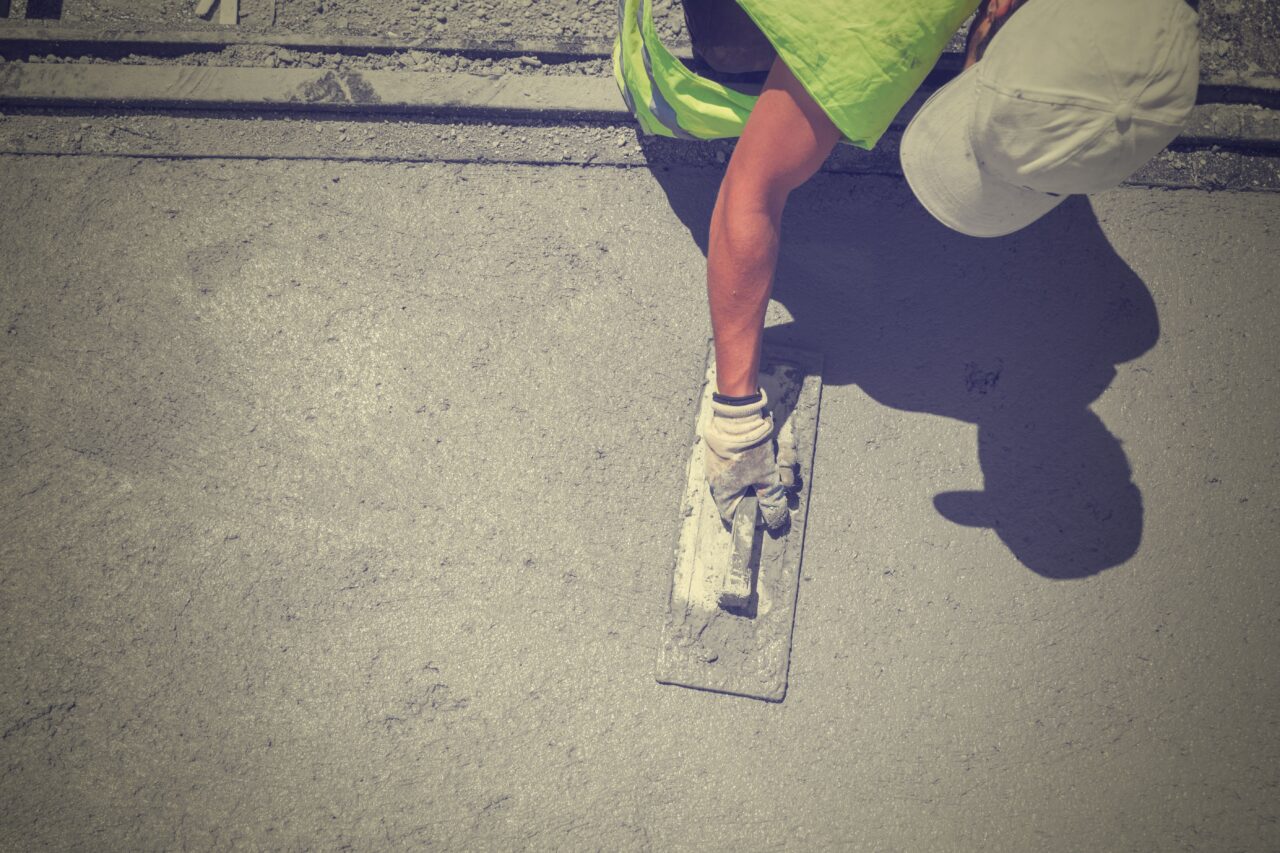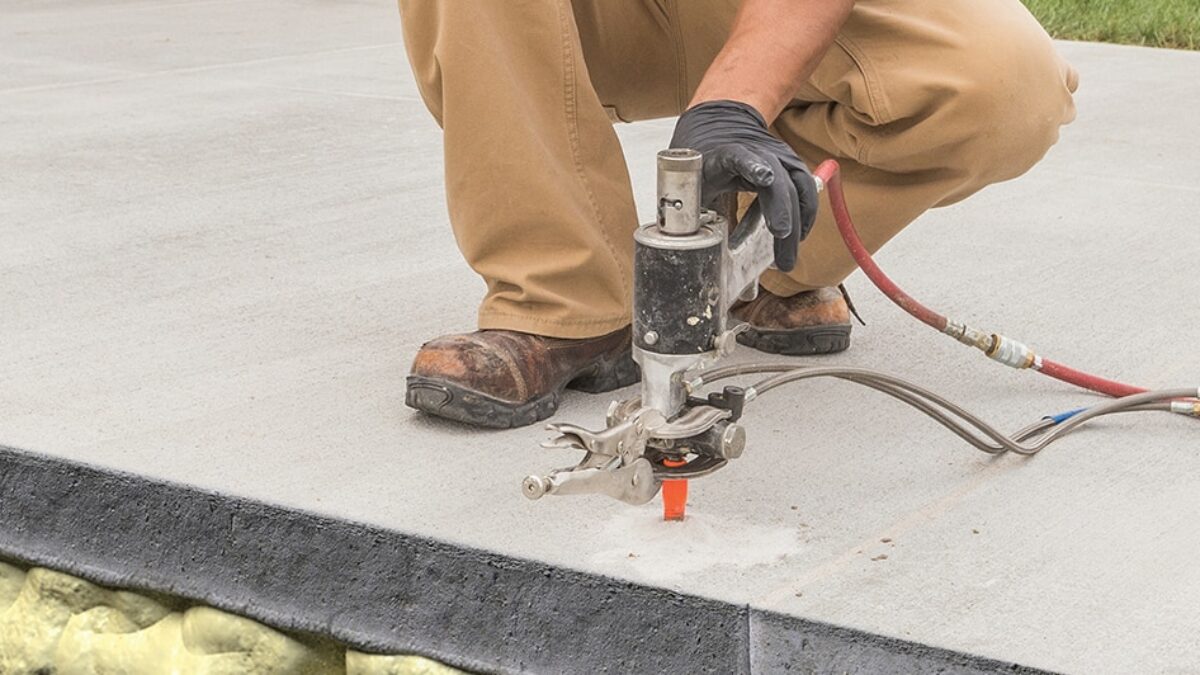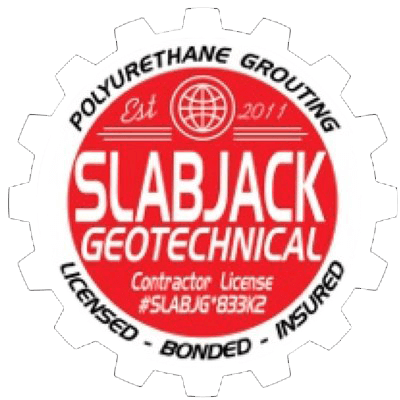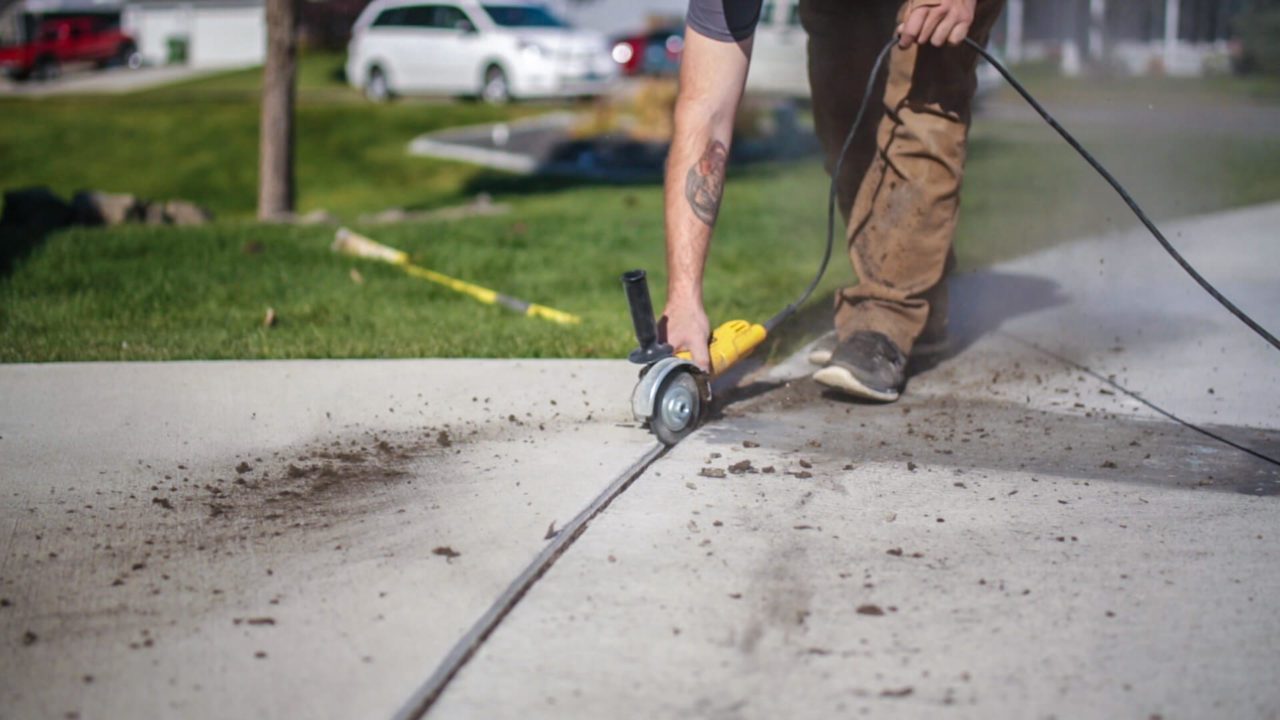A comprehensive, mudjacking vs replacing concrete comparison of mudjacking vs concrete replacement methods for repairing and leveling concrete, including cost, time, labor, safety, and long-term effectiveness considerations.
Understanding Mudjacking
Mudjacking, also known as slabjacking, is an effective concrete repair method utilized to raise and level sunken concrete slabs. This technique involves injecting a mixture of materials, such as cement, soil, and other binding agents, beneath the affected area to lift and stabilize the concrete, providing a practical solution to restore the integrity and appearance of concrete surfaces. Mudjacking is commonly used for repairing uneven sidewalks, driveways, patios, and other concrete structures, offering property owners a cost-effective alternative to concrete replacement.
For example, consider a residential property with a sunken patio due to soil settlement. In this scenario, mudjacking can be employed to lift and level the sunken concrete, effectively restoring the patio to its original position. By utilizing mudjacking, the property owner can avoid the expense and disruption associated with completely replacing the concrete, demonstrating the practicality and efficiency of this concrete repair method.
The process of mudjacking typically involves several key steps, including drilling small holes into the sunken concrete, injecting the slurry mixture beneath the slab, and allowing the mixture to fill the voids and lift the concrete. This method is known for its cost-effectiveness and efficiency, making it a preferred choice for many property owners looking to address concrete settlement issues. The advantages of mudjacking as a concrete leveling method, including its affordability and minimal disruption to the surrounding area, make it a compelling option for those seeking an effective and budget-friendly solution for uneven concrete surfaces.
The Process of Concrete Replacement
Concrete replacement is a comprehensive solution that entails the complete removal and replacement of damaged or sunken concrete slabs. This method is typically favored when the concrete damage is severe, compromising the structural integrity, or when the existing concrete is irreparable. For example, if a concrete driveway has sunk and developed a horizontal crack, or if part of the sidewalk is also sinking, concrete replacement may be the most effective course of action to address the extensive damage.
In a commercial setting, consider a parking lot with widespread concrete deterioration, including deep cracks and significant settlement issues. In such cases, concrete replacement becomes essential to ensure the safety and functionality of the parking area. By opting for concrete replacement, property owners can address the extensive damage comprehensively, providing a renewed and structurally sound surface that meets safety and aesthetic standards.
The process of concrete replacement involves several detailed steps. Firstly, the old concrete is demolished and removed, ensuring a clean slate for the new installation. The next step is to prepare the base, which includes compacting the soil and ensuring proper grading to prevent future settlement issues. After the base preparation, fresh concrete is poured and meticulously leveled to create a smooth and even surface. This is followed by the crucial curing phase, allowing the new concrete to gain strength and durability. While concrete replacement guarantees a brand-new and long-lasting surface, it is important to note that this method is labor-intensive and time-consuming compared to repair alternatives such as mudjacking.
Furthermore, concrete replacement may also be the preferred solution in scenarios where mudjacking is not feasible due to the extent of the damage or the condition of the existing concrete. For instance, if a concrete slab has multiple large cracks and significant deterioration, replacing the concrete entirely might be the most effective and lasting remedy. Therefore, concrete replacement offers a thorough approach to addressing severe concrete damage, providing a renewed and structurally sound surface for various applications.

Key Considerations for Choosing Between Mudjacking and Concrete Replacement
When deciding between mudjacking and concrete replacement, several critical factors should be considered to make an informed choice. One of the primary considerations is the comparative analysis of the cost, time, and labor involved in each method. Typically, mudjacking is known to be more cost-effective compared to concrete replacement, making it a favorable option for those looking to save on expenses without compromising on quality. On the other hand, concrete replacement may involve higher costs and longer completion times due to the extensive labor and materials required for the process.
Safety considerations play a pivotal role in the decision-making process, especially when evaluating whether to repair or replace concrete. It’s essential to ensure that the selected method not only provides a durable repair or replacement but also upholds safety standards. Evaluating the safety aspects of each method is crucial in determining the most suitable approach for the specific concrete repair or replacement project.
In addition to cost and safety, the long-term effectiveness and environmental impact of the chosen method should be carefully evaluated. Understanding how each method contributes to the durability and sustainability of the concrete structure is imperative for making an informed decision. For example, while mudjacking may offer a quicker and more budget-friendly solution, it’s essential to consider how it measures up in terms of long-term stability and environmental impact compared to the durability and eco-friendliness of concrete replacement. By thoroughly assessing these key considerations, individuals can make well-informed choices that align with the unique requirements of their concrete repair or replacement needs.
Research sources offer valuable insights into the comparative analysis of cost, time, and labor involved in mudjacking and concrete replacement. For instance, here at Slabjack Geotechnical, we emphasize the cost-effectiveness of repairing concrete compared to replacing it. Concrete raising is typically 33% less expensive than replacing concrete, saving time, manpower, and materials. Additionally, we can also address any safety concerns when evaluating whether to repair or replace concrete, providing a comprehensive perspective on the critical considerations for choosing the most suitable method for concrete repair or replacement.
Exploring the Pros and Cons of Mudjacking
Mudjacking offers numerous benefits as a concrete leveling method, making it a popular choice for property owners seeking an efficient and cost-effective solution for sunken or uneven concrete surfaces. One of the key advantages of mudjacking is its cost-effectiveness compared to concrete replacement. By lifting and leveling sunken concrete slabs rather than removing and replacing them, property owners can save a significant amount of money on labor and materials. This makes mudjacking an attractive option for those looking to address uneven surfaces on a budget.
Another advantage of mudjacking is its minimal disruption to the surrounding area. The process involves drilling small holes into the affected concrete surface and injecting a slurry mixture underneath to lift the slab. This means that landscaping, structures, or other nearby elements are not extensively disturbed during the repair process. Homeowners and business owners appreciate the convenience of mudjacking, especially when the affected area is a high-traffic zone.
Furthermore, mudjacking provides a sustainable solution for concrete repair, contributing to the environmental impact of the repair process. By avoiding the complete removal and replacement of concrete, mudjacking reduces the amount of waste generated, promoting eco-friendliness and sustainability in concrete maintenance and repair.
Despite its benefits, it’s important to consider the limitations of mudjacking. Over time, the material used in mudjacking can erode, which may lead to the need for additional repairs in the future. Additionally, mudjacking may not be suitable for addressing extensive concrete damage that goes beyond surface leveling, such as severe cracking or structural issues. It’s crucial for property owners to assess the specific condition of their concrete surfaces and consult with professionals to determine if mudjacking is the appropriate solution. Real-life examples of successful mudjacking projects, such as the restoration of a sunken driveway or sidewalk, can help illustrate the effectiveness of this method in providing a durable and cost-efficient solution for concrete repair.
Weighing up Mudjacking vs Concrete Replacement
Concrete replacement is a comprehensive solution that involves removing the existing concrete and pouring new concrete in its place to address severe damage and structural concerns. This method guarantees a brand-new and long-lasting surface, making it a preferred choice for extensive concrete issues that require a thorough and enduring solution.
In one real-life example, a commercial property with severely damaged concrete walkways and parking areas opted for concrete replacement to ensure a durable and visually appealing outcome. While the project required significant investment and time, the new concrete surfaces drastically enhanced the overall appearance of the property and mitigated safety concerns related to trip hazards and liability issues. This case exemplifies the transformative impact of concrete replacement in revitalizing deteriorated concrete areas, despite the initial challenges associated with the process.
Furthermore, concrete replacement may involve higher costs and longer completion times due to the extensive labor and materials required for the process. However, the method offers the advantage of addressing severe structural issues comprehensively, ensuring the safety and durability of the new concrete surface. By weighing the benefits and limitations of concrete replacement, property owners can make informed decisions that align with the specific requirements of their concrete repair or replacement needs.
Research sources provide valuable insights into the pros and cons of concrete replacement, offering expert opinions and experiences to guide property owners in their decision-making process. For instance, here at Slabjack Geotechnical, we highlight the cost-effectiveness of concrete replacement compared to repair methods, emphasizing how repairing concrete can save time, manpower, and materials compared to replacement. By incorporating such insights, property owners can gain a comprehensive understanding of the advantages and limitations of concrete replacement, enabling them to make well-informed choices that align with their specific needs and goals for concrete repair or replacement.
The Role of Soil Preparation in Concrete Maintenance
Soil compaction and preparation are fundamental factors in the maintenance of concrete surfaces. It is crucial to understand the critical role of soil in the integrity and longevity of concrete structures. Proper soil preparation before the installation or repair of concrete is essential to prevent future settling or structural issues, ensuring the stability and durability of the concrete surface.
For instance, if a concrete driveway is being installed in an area with poorly compacted soil, it may lead to uneven settling over time, resulting in cracks and an uneven surface. This can be avoided by conducting a thorough soil compaction process before laying the concrete. By ensuring that the soil is properly compacted and graded, the risk of future settling or structural issues can be significantly reduced, contributing to the long-term effectiveness of the concrete installation.
Additionally, for concrete repair projects such as mudjacking or concrete replacement, addressing soil compaction is equally essential. Before conducting any repair work, it is imperative to assess the condition of the soil beneath the affected concrete surface. This evaluation helps in understanding the underlying causes of the concrete issues, enabling the implementation of effective repair solutions that address both the concrete surface and the soil condition. By paying attention to soil compaction and preparation, the repair work can be carried out in a manner that minimizes the risk of recurring issues, ensuring the sustained stability and functionality of the concrete structure.
Research sources provide valuable insights into the role of soil preparation in concrete maintenance, offering expert opinions and experiences to guide property owners in their decision-making process. For example, Mr. Level emphasizes the importance of soil compaction in preventing future concrete issues, providing practical tips for ensuring proper soil preparation before concrete installation or repair. By incorporating such insights, property owners can gain a comprehensive understanding of the critical role of soil compaction in concrete maintenance, enabling them to make informed decisions that promote the long-term stability and durability of their concrete structures.
Informed Decision Making for Concrete Repair and Replacement
When it comes to choosing between mudjacking and concrete replacement for concrete repair, understanding the specific advantages and limitations of each method is crucial. Mudjacking, also known as concrete leveling, is a cost-effective and efficient way to repair sunken or uneven concrete surfaces. It involves the process of pumping a slurry mixture (a combination of water, soil, sand, and cement) underneath the sunken concrete to lift and stabilize it. This method can be particularly effective for repairing sidewalks, driveways, and patios, providing a level surface and preventing further damage to the concrete.
On the other hand, concrete replacement is the process of removing the existing concrete and pouring new concrete in its place. This method is typically preferred in situations where the existing concrete is extensively damaged, has deep cracks, or is structurally unsound. While concrete replacement ensures a completely new and durable surface, it often requires more time, labor, and materials compared to mudjacking. Additionally, it can be a disruptive and costly process, especially for larger areas such as parking lots or commercial spaces.
To illustrate, a property owner with a sunken driveway may opt for mudjacking if the driveway has minor sinking issues due to soil settlement. However, if the driveway has extensive cracking and structural damage, concrete replacement might be the more suitable long-term solution. Therefore, understanding the specific requirements of a project is essential in making an informed decision between mudjacking and concrete replacement.
Considering the comparative cost, time, and labor involved in each method is also essential for property owners. While mudjacking is generally more cost-effective and less labor-intensive, concrete replacement offers the advantage of a brand-new surface that may require less maintenance over time. Furthermore, evaluating the long-term effectiveness and environmental impact of each method can help property owners make sustainable choices that align with their maintenance goals and overall property management strategies.
Raise Your Concrete With Slabjack Geotechnical
The decision to choose between mudjacking vs concrete replacement for concrete repair and replacement requires careful consideration of the specific requirements, cost, time, labor, and long-term durability of each method. By thoroughly assessing the advantages and limitations of both methods, property owners can make well-informed choices that align with their unique needs and goals for concrete maintenance and repair.
Whether you seek a budget-friendly solution or a sustainable method to restore your concrete surfaces, Slabjack Geotechnical stands ready to assist. Our expert team combines extensive experience with cutting-edge techniques to provide reliable concrete raising and leveling services in Seattle, Tacoma, and the surrounding areas. Contact us today to embark on a journey towards revitalizing your concrete infrastructure or to learn more about the tailored solutions we offer. Trust Slabjack Geotechnical for quality and efficiency in raising your concrete to new heights.

FAQs
Is Mudjacking worth it?
Whether mudjacking is worth it depends on the specific situation. It can be a cost-effective solution for uneven concrete, but the long-term success relies on factors such as soil stability and proper installation.
What is the life expectancy of mudjacking?
Mudjacking’s life expectancy can vary, but it generally lasts for several years to a decade or more, depending on factors like soil conditions, installation quality, and environmental factors.
Is concrete raising worth it?
Concrete raising can be worth it for addressing uneven surfaces and restoring functionality. Factors such as the extent of the damage, the chosen method, and the long-term goals should be considered when determining its worth.
How long does raised concrete last?
The longevity of raised concrete depends on various factors, including the quality of the repair, environmental conditions, and usage. Properly executed concrete raising can last for many years, providing a durable and stable surface.















